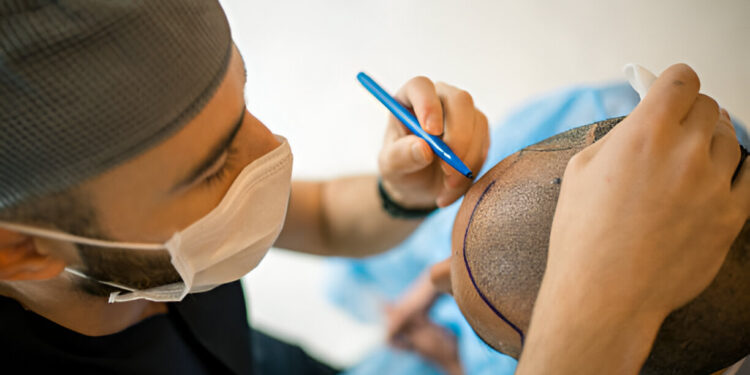A hair transplant london is a treatment where doctors move hair from one part of your head to another spot where hair is thin or missing. Many people choose a hair transplant to get back their natural look. Losing hair is common as we age, but some people lose hair sooner because of their family genes, stress, or even certain illnesses. Sometimes, people may feel shy or worried about hair loss. For many, a hair transplant feels like a fresh start. It can boost confidence by making people feel good about their appearance. Moreover, it offers a long-lasting solution to hair loss. With simple, clear steps, a hair transplant can help bring back a full head of hair. This guide will explain the basics of hair transplant procedures and why so many people in London are turning to this option.
Why Choose London for a Hair Transplant?
London is a popular place for hair transplants because it has some of the best clinics and skilled doctors. People can trust that they are getting quality care with the latest tools and technology. In London, the doctors are experienced, so patients can feel safe and comfortable. Another reason to pick London is its location. Since it’s a well-connected city, people can easily travel there for treatment from nearby areas or even other countries. The variety of clinics also means that people can find options that suit their budget and needs. Furthermore, London has strict health rules, which helps ensure that each clinic meets high standards for safety and care. Choosing London for a hair transplant is a good decision for anyone wanting the best treatment in a reliable setting.
Types of Hair Transplant Procedures
There are two main types of hair transplant methods: FUE and FUT. The first, FUE (Follicular Unit Extraction), is popular because it moves each hair follicle one by one from a donor area to the area needing more hair. This method leaves tiny dots instead of a big scar, which heals quickly. The second type, FUT (Follicular Unit Transplantation), involves taking a small strip of skin with hair from one part of the scalp. This strip is then divided into tiny pieces, each with hair, and placed in areas with hair loss. FUT is quicker than FUE but leaves a small scar, which can be covered by other hair. Deciding between FUE and FUT is important, so it’s best to speak with a doctor. Both methods are safe and effective, but one may suit your needs better.
The Hair Transplant Process
Getting a hair transplant involves a few steps to ensure good results. First, before the surgery, patients meet with the doctor for a consultation. The doctor checks the scalp, discusses goals, and plans the treatment. Then, on the day of the surgery, patients are made comfortable. During the procedure, the doctor carefully moves hair from the donor area to where it is needed. Most patients feel very little discomfort because they receive a numbing treatment. After the surgery, there are steps to care for the scalp, like washing gently and avoiding direct sunlight. These steps help the scalp heal faster and protect the new hair. By following these instructions, patients can enjoy smooth healing. Hair transplants may sound complex, but with a trained doctor, each step is simple and easy to follow.
Benefits and Possible Risks of Hair Transplant
Hair transplants offer several benefits. First, they can restore a person’s natural look, making them feel more confident. Having a fuller head of hair can help people feel better about themselves, especially when meeting others. Another benefit is that hair transplants provide lasting results. Once the new hair grows, it stays and blends well with the original hair. However, like any treatment, there are possible risks. These include minor pain, swelling, or redness, which usually go away within a few days. Some people might experience small scars, but these are typically hidden by other hair. It’s good to know that complications are rare, especially with an experienced doctor. By understanding the benefits and risks, people can make an informed decision. A hair transplant can be a great option for those wanting a new start.
What to Expect After a Hair Transplant
After a hair transplant, patience is key. At first, the scalp may feel sensitive, and tiny scabs may form, but these go away within a week. Over time, the new hair will start to grow. Usually, after three to four months, people can see the first signs of new hair. By six to nine months, the results become more noticeable, and a full head of hair usually appears within a year. Follow-up visits are important, too, as the doctor will check the healing and growth. Some people may need extra care tips or treatments to get the best results. With regular check-ins and proper care, the results can look natural and last for many years. Knowing what to expect helps people feel prepared and excited about the journey to a fuller hairstyle.
Final Words
A hair transplant is a big decision, and choosing London for this treatment brings access to quality care. It’s important to talk to a skilled doctor to find out if this is the right choice for you. The journey requires patience, but the results are worth it. A hair transplant can bring back not only hair but also confidence and happiness. For anyone looking to make a change, this procedure could be a wonderful solution. So, take the next step, explore the options, and think about a fresh start with a hair transplant in London. It’s an investment in yourself that could make a lasting difference.



